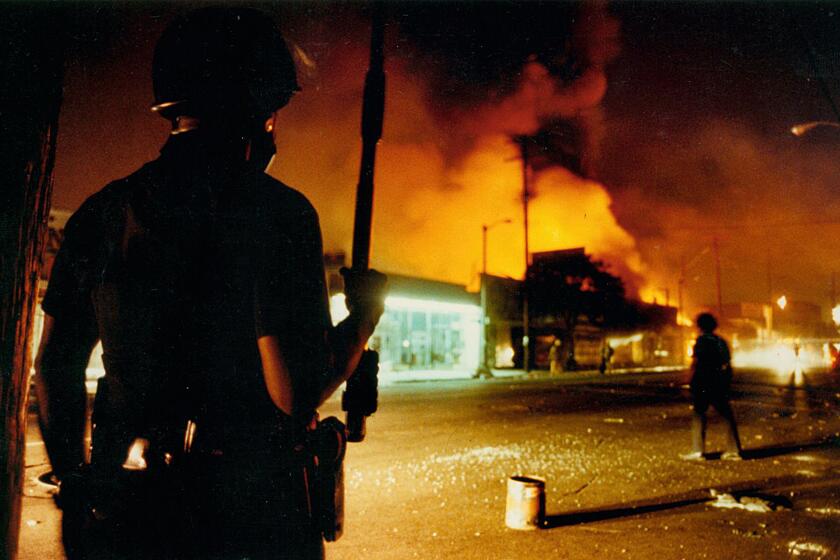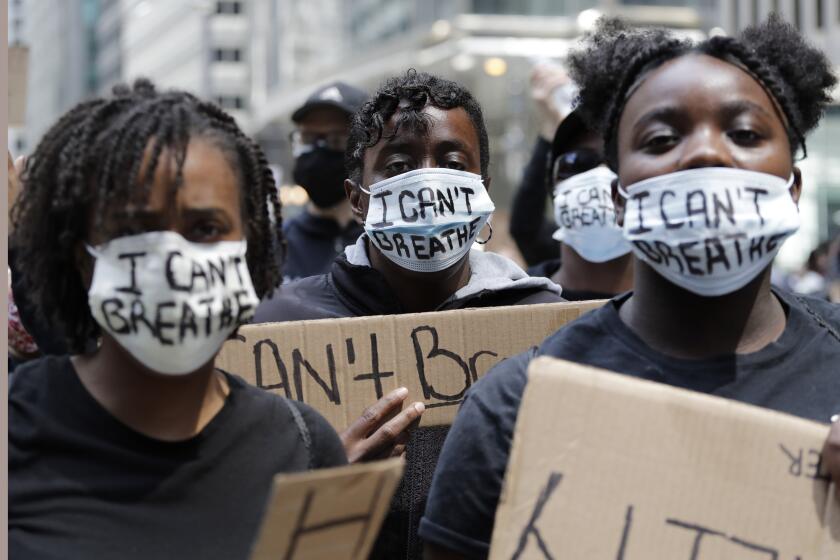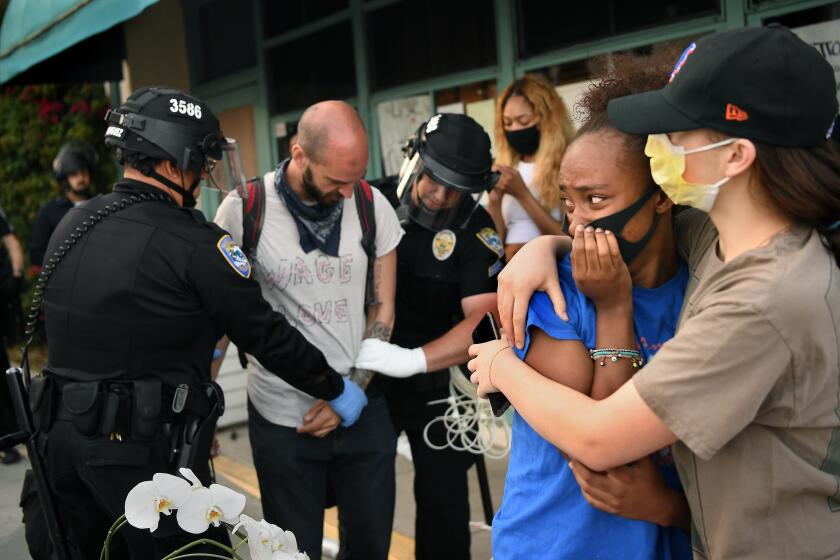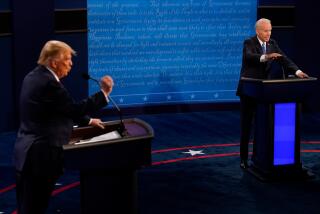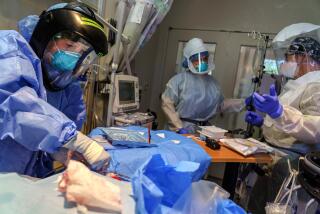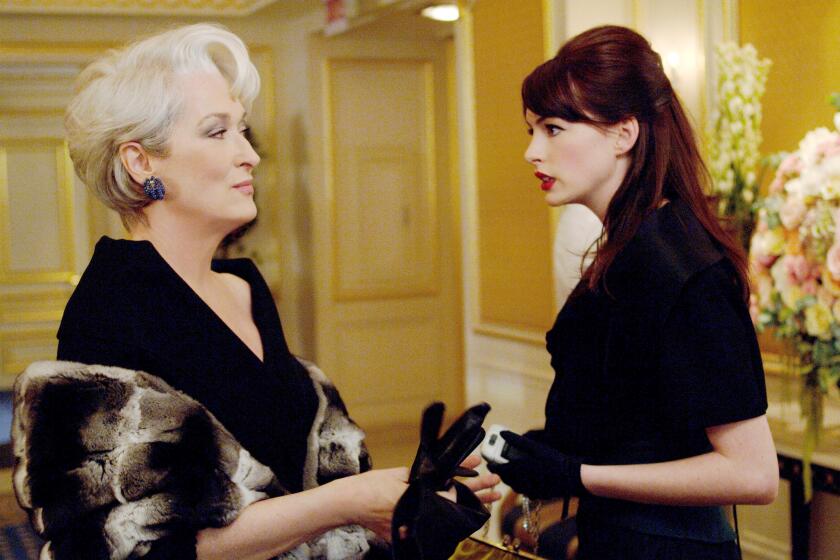Nostalgia fuels racism and injustice. Don’t fall under its spell again
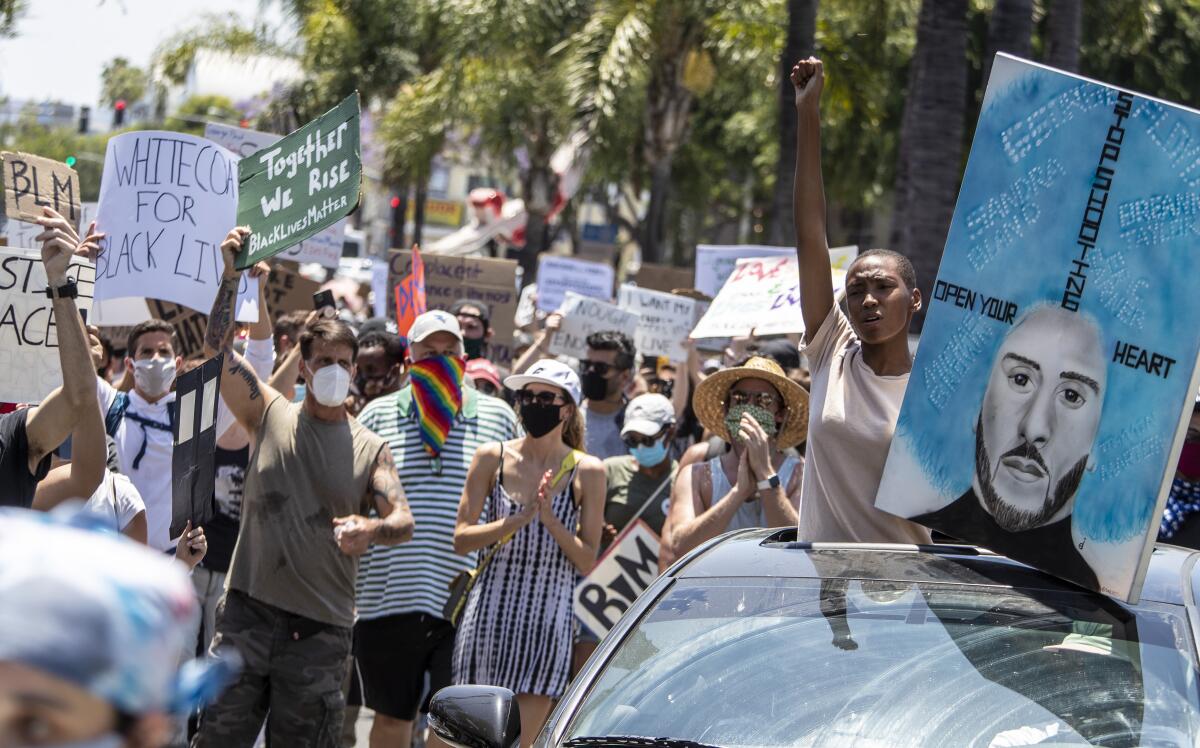
- Share via
It’s only June but I think it’s safe to say that 2020 will go down in history as one terrible, horrible, unrelievedly crazy year. A pandemic, more than 100,000 Americans dead in three months, hospitals overrun, businesses closed, record unemployment, massive protests over racist police brutality — in some places turned violent by looters, agitators and “law and order” tactics and forcing curfews in daylight hours — and then a president who scattered peaceful crowds with chemical spray and rubber bullets to get a photo op in front of a church that didn’t want to be used as a photo op.
We keep thinking it can’t get worse, and then it does. (Wait, was that another earthquake?)
I’m not even going to mention things like toilet paper hoarding, demonstrations over beach closures and face-covering requirements, yeast scarcity and the arrival of murder hornets. OK, I just did. But frankly, they all seem kind of quaint — remember when we were trying to make masks out of dish towels and rubber bands?
So it’s not surprising that a lot of people are wondering if things are ever going to go “back to normal.” Can this country ever be the same again?
To which the only sane answer is: God, I hope not.
Obviously, everyone is hoping/praying/working toward the day when COVID-19 infection rates and deaths drop at least to levels more consistent with the flu. And if police departments around the country finally take real steps to end racist brutality, maybe people will feel heard enough to stop protesting in non-socially distant groups — and the looters, with no protests to hide behind, would stop.
Black Lives Matter organizers wanted to bring the rage over the George Floyd case and so many others to L.A.’s elites, in their own neighborhoods.
And yes, of course we are all looking forward to seeing friends and family again, sending our kids back to school, returning to church and the mall, being able to make television and movies, and reading newspapers without crisis-driven headlines and super-alarming graphics.
But I just attended a Black Lives Matter march in Montrose, where hundreds of mostly white protesters took a knee for the same length of time that Derek Chauvin knelt on George Floyd. We learned that almost nine minutes is a very long time to spend with one knee on the ground, much less on another person’s neck. Intent is required. And when a young Asian woman informed the crowd in no uncertain terms that they were not to go home and pat themselves on the back for marching, or for hashtagging, or even for donating because it wasn’t enough, everyone applauded.
That is very much not normal. It’s better.
As much as we long for the day when we can all start complaining about how bad and expensive movies are again, I would hate to think we’ll make it through the upheavals of 2020 in order to simply return to the status quo.
In less than six months, many of our country’s biggest flaws — first among them an internalized chronic racism — have been exposed. It would be a sin not to use this opportunity to correct them.
The main concern of black people right now isn’t whether they’re standing three or six feet apart, but whether their sons, husbands, brothers and fathers will be murdered by cops.
We should not accept going back to any “normal” that includes:
Gaps in healthcare and other resources that leave black and brown communities more vulnerable to disease and natural disasters.
“Essential” jobs that offer no benefits, not to mention wages so low workers cannot support themselves and their families.
American children and their parents dependent on food supplied by schools.
Hospitals and healthcare facilities that are understaffed and short of supplies.
Police departments that refuse to address issues of racism and brutality in meaningful and transparent ways.
Government officials, at any level and of any party, who ignore the recommendations of experts and science or put partisan posturing before the common good.
As many have pointed out, the coronavirus is every problem that plagues us turned into an actual plague: COVID-19 endangers us all, but so do racism, poverty and injustice.
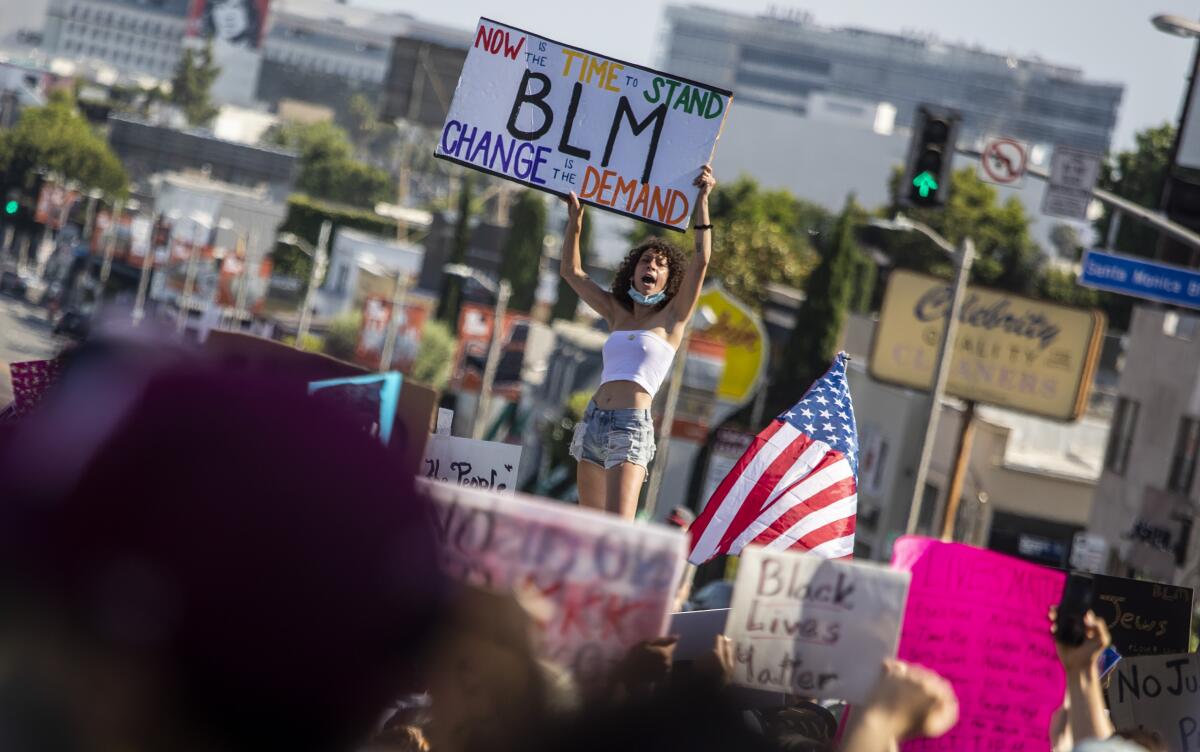
I don’t want to go back to “normal” if it means a world where there is no real safety net for the un- or semi-employed and those with full-time jobs are too often expected to work all day, every day of the week. Where many workers do not have paid sick days and even those who do often feel pressured to drag themselves to work as a mark of dedication.
I certainly don’t want to go back to a “normal” in which people become sick and die because they do not have access to healthcare, and by access I mean hospitals and doctors’ offices that do not require a 10-hour wait that results in non-treatment and crippling bills.
Nor should we accept a “normal” in which working parents often have no recourse but to send a sniffly child to school (a school that probably offers rewards for perfect attendance) and college students must drag their ailing selves to class because they have already used up their one unexcused absence.
And how, as long as we’re on the topic, is it “normal” to have an economy that is based on the notion that most families have two parents, one of whom works while the other happily stays home, when that is far from the norm?
There has been something both wonderful and ridiculous in our collective attempt to find the good in our international shutdown. Whether it’s celebrating medical front-liners or rediscovering the benefits of nature or cooking, the ability to find the good in the bad is one of humanity’s most endearing characteristics. It’s why art and literature exist. It’s why Americans constantly exhort themselves to learn from even the worst experience.
White people who want to be allies need to worry less about the George Floyd protests and more about the systemic racism that sparked them.
But in this crazy year, those lessons need to extend beyond personal goals of making time for yoga or family dinners; change has to go deeper than social distancing and better personal hand hygiene. We need to look at the failings of the culture — our work, political, legal and social culture — and eradicate infection there too.
Because, as many wise people have said, if we just keep doing what we’ve always done, we’ll keep getting what we’ve always gotten.
We’ve seen a learning curve toward change during the protests over George Floyd’s death, as the media pulled its initial focus on “violent protest” to separate the mostly peaceful demonstrations from the looting done by a relative few (often in no way related to the protests) and look at how various police tactics have helped and hurt the situation. We’ve seen how police chiefs, mayors and members of the National Guard, acceding to protesters’ requests that they take a knee, were greeted with applause. And we’ve seen how law enforcement’s tear-gassing, rubber bullets and targeting journalists have turned demonstrations into clashes that, in many cases, led to larger peaceful demonstrations the following day.
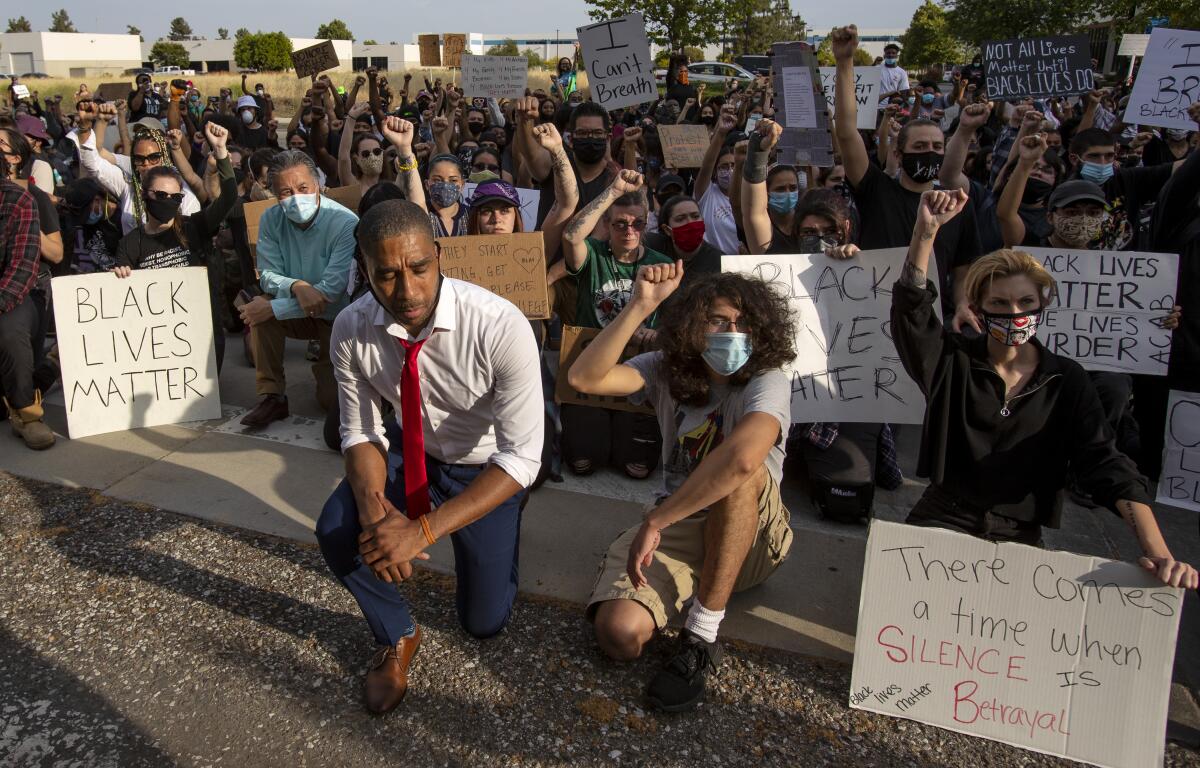
Many things have cracked or collapsed in 2020; more than 100,000 people are dead and millions more have been injured, traumatized and exhausted by the physical and psychological fallout of the pandemic and Floyd’s death. I think we can all agree that there really is enough toilet paper to go around, that online education is a big fail, especially for families with special-needs (or frankly, more than two) kids and that, while the ritual evening applause for healthcare heroes is great, what medical first responders really deserve are big raises, congressional Medals of Honor and maybe a parade.
I think we can also agree that seeing unprecedented protests in all 50 states, and around the world, makes it clear that Americans want an end to racial injustice just as much as we want a vaccine, and with the same immediacy.
What we’re going to do about those murder hornets, however, is anyone’s guess.
Everyone knows it will take a lot of work and time and creativity to get people back to work and school, into churches and theaters and ballparks again. And when we are not staring up at the ceiling at the soul-squeezing hour of 4 a.m., we know that Americans are more than capable of working hard and creatively and even together, when we put our minds to it.
But since we have to rebuild anyway, let’s build something different. Let’s build an economy that protects all of us, with all our human needs and frailties; let’s build a society that reflects our need for connection and communion, a government that can work together even while members of it disagree.
Because a culture that does not value its workers, that allows children to go hungry because schools are closed and that forces people into the streets to demand basic human rights in the middle of a pandemic has ailments even more perilous than COVID-19. And that’s a “normal” to which no one should want to return.
More to Read
The biggest entertainment stories
Get our big stories about Hollywood, film, television, music, arts, culture and more right in your inbox as soon as they publish.
You may occasionally receive promotional content from the Los Angeles Times.

